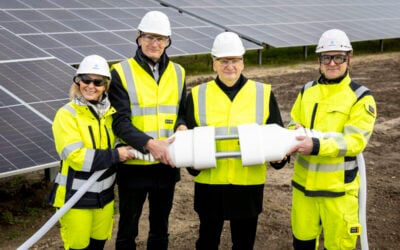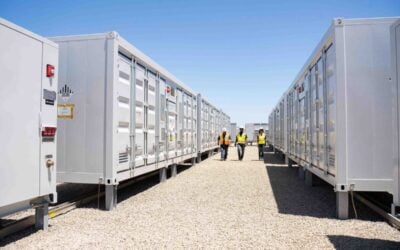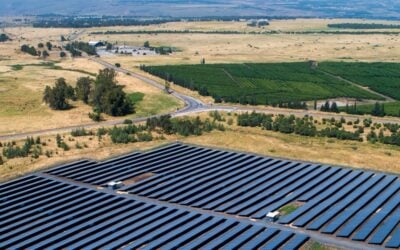SolarCity’s US$1 billion investment from Credit Suisse will be used to boost the installer’s commercial solar offering. Image: SolarCity.
Along with cost reductions in balance of systems (BoS) components and US$1 billion of investment, energy storage technologies can reduce the cost of commercial solar and drive the market segment forward in the US, a SolarCity spokesman has said.
Recent investment from Credit Suisse into SolarCity will lead to US$1 billion worth of commercial solar installations, with energy storage expected to be an integral part of the offering.
The US solar installer and leasing company, one the market’s clear leaders, is better known for its work in the residential space. The new funding, which SolarCity announced the activation of on Wednesday, will finance over 300MW of new commercial installation over the next two years, the company said.
According to Jonathan Bass, SolarCity’s vice president of marketing, SolarCity’s commercial storage product, DemandLogic, is likely to be a key part of this. Bass told PV Tech Storage yesterday that along with innovations in mounting systems, for some customers the cost of commercial solar in the US can be significantly lowered by adding storage to help combat demand charges. Bass explained these charges briefly for the benefit of an international audience.
Try Premium for just $1
- Full premium access for the first month at only $1
- Converts to an annual rate after 30 days unless cancelled
- Cancel anytime during the trial period
Premium Benefits
- Expert industry analysis and interviews
- Digital access to PV Tech Power journal
- Exclusive event discounts
Or get the full Premium subscription right away
Or continue reading this article for free
“Commercial utility rates are often lower than residential utility rates, but commercial rates structures sometimes include something called demand charges,” he said.
“If you go over a certain amount of load during a billing cycle, even for a short period of time, your demand charge is based on that peak load, that peak draw from the grid. Solar can offset your overall usage, but on a day-to-day basis the load for many businesses is relatively flat from about 9am to about 5pm when everybody leaves.
“If you look at a business with solar, demand from the grid is way down in the middle of the day when the solar resource is maximised and then toward the end of the day, they’re still using the same amount of electricity in the building, but the solar system’s not producing as much as the sun goes down. So they might go up into an upper demand charge tier at the end of the day.”
Better known for its work on houses, Musk-backed SolarCity is also now one of the biggest players in the US commercial solar space. Image: SolarCity.
Bass said that storing solar in the middle of the day and then discharging at the end of the day can give a business a flat level of demand for the day, which he said in many cases “more than offsets the additional cost of the battery storage system”. Combined with the advantage of offering backup power, Bass said, clients including retail giant Wal-Mart had signed up to SolarCity’s commercial solar-plus-storage package.
Bass said that from a limited launch in California, Connecticut and Massachusetts, regions of the US where demand charges are typically higher, is becoming “economical in more and more places”. He said that while it was still the case that DemandLogic “tends to be most attractive for customers that are getting hit with exorbitant demand charges,” a combination of battery cost reductions and
However, Bass would not be drawn on the possible effect on battery costs from the company’s collaborations on batteries and storage with Tesla Motors. SolarCity and Tesla have a literal connection in that Tesla founder Elon Musk is cousin to SolarCity’s chief executives, Peter and Lyndon Rive, while Tesla’s battery packs power some of SolarCity’s storage products.
“I’ll revert it to Tesla on that, you’d need to get comment from them on their plans. But generally the scale of manufacturing will drive the costs down and definitely Tesla’s plans are part of that,” Bass said.
In general terms, Bass said, it was good that high profile discussion of storage was raising awareness of the technology and the possibilities it offers.
“The technology works very well and as the manufacturing scales up, the costs will come down. It’s an important step towards a more distributed, cleaner grid.”
Meanwhile Tesla, currently building its ‘Gigafactory’ battery plant in Nevada, revealed this week via a note to investors that a long-trailed announcement officially expected on 30 April will involve production of utility-scale battery storage systems.
Tesla’s press office and charging infrastructure and storage expert Greg Callman have not yet responded to PV Tech Storage emails enquiring about the latest development.





